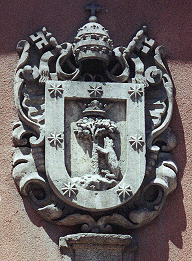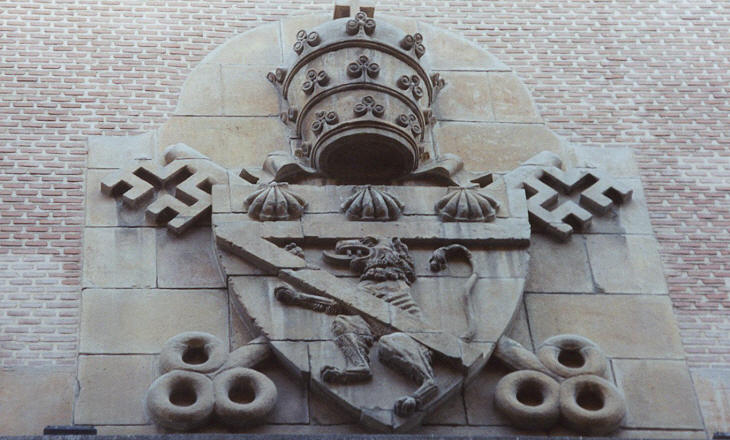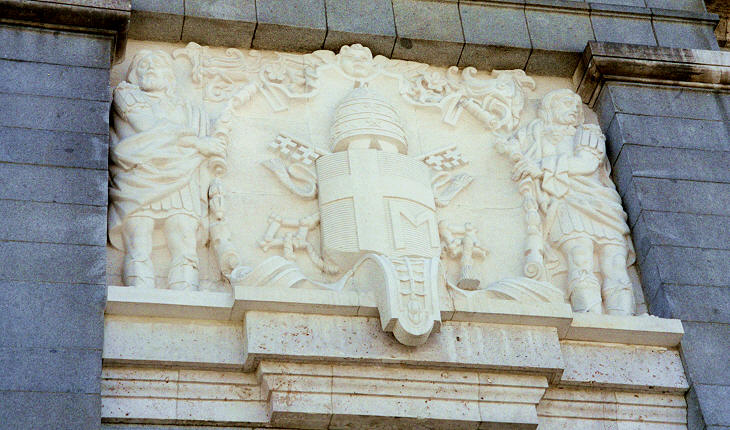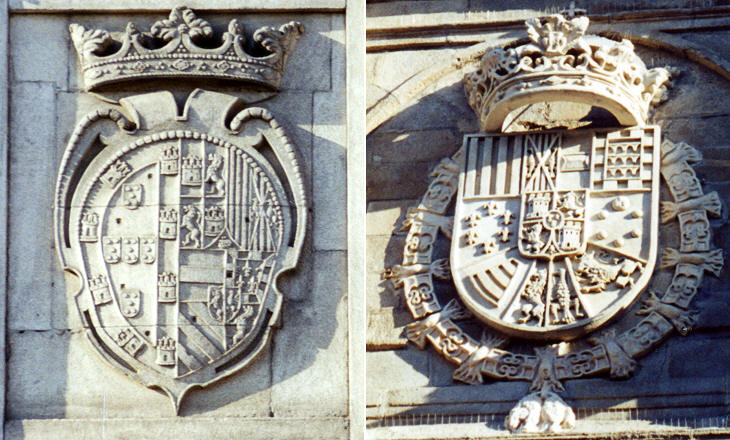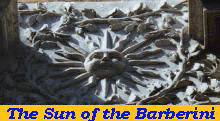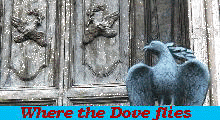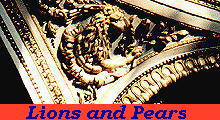  What's New! Detailed Sitemap All images © by Roberto Piperno, owner of the domain. Write to romapip@quipo.it. Text edited by Rosamie Moore. |
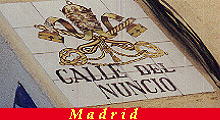 MADRID MADRID(the street where the nunciature is located) In 1561 King Philip II made Madrid the capital of one of the largest empires in history. Spain was for centuries the most important supporter of the Roman Catholic Church and Madrid retains some memory of these links like this modern papal coat of arms with the symbol of the City of Madrid.
Historical Madrid centres around Plaza Mayor. Although most of the buildings are relatively modern, the net of the streets derives from the old city. In this area is the church of San Gines which dates back to the XIth century, but was almost entirely rebuilt in 1645 (my background shows its elegant bell tower). On the fašade there is a large (recent) coat of arms of Innocent VI (Pope in Avignon 1352-1362).
Another recent papal coat of arms can be found on the fašade of Nuestra Senora de la Almudena, the (not yet finished) cathedral of Madrid facing the Royal Palace. The coat of arms is in honour of John Paul II.
The area south of Plaza Mayor has another, more interesting evidence of the links between Spain and the Papal State. In Calle del Nuncio there is the Nunciature (the Embassy of the Pope's diplomatic representative in another country) built in the XVIIIth century which is still decorated with the chequered eagle of Pope Innocent XIII (1721 - 1724).
Obviously Madrid has many coats of arms of the kings of Spain and actually most of the churches are decorated by royal coats of arms. Here below you can see (left) a very fine Renaissance coat of arms on the fašade of Monasterio de las Descalzas Reales and (right) an XVIIIth century coat of arms on the fašade of la Vera Cruz. The comparison shows the addition to the royal coat of arms of references to Italian families, namely the Farnese (on the left) and the Medici (on the right), both extinguished in the mid XVIIIth century and whose rights were inherited by Charles III of Spain.



SEE THESE OTHER EXHIBITIONS (for a full list see my Detailed Index) |
